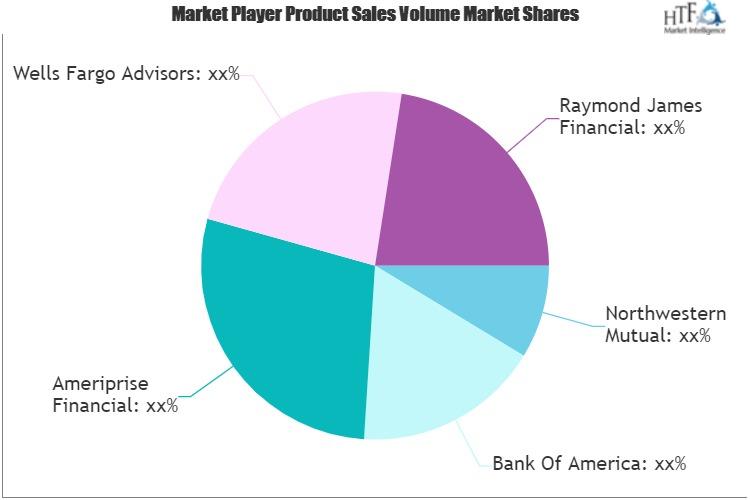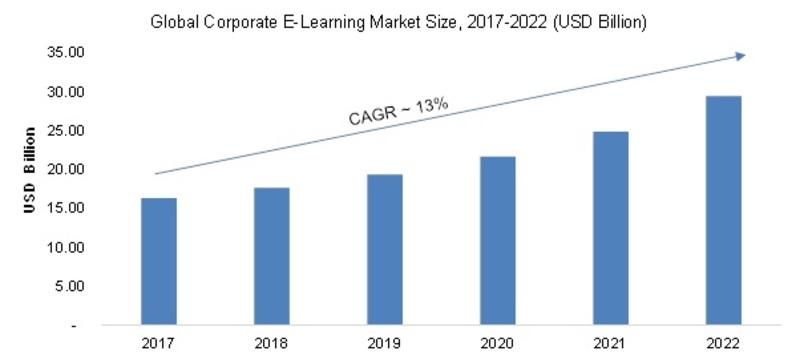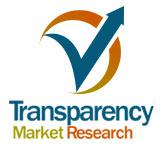Press release
Antimicrobial Packaging Market Leading Players, Analysis, Market trend and Forecast Up To 2024
The ability of top products from the global antimicrobial packaging market are completely capable of providing stored food and beverage contents with a well-extended shelf life. This forms the leading driver for the market currently. The global antimicrobial packaging market is also expected to be augmented by the increased demand shown by consumers resulting from a greater awareness on health issues that come with improper storage and use of wrong storage materials. The overall demand for antimicrobial packaging has also benefitted from a globally increasing consumption rate of processed foods. However, the global antimicrobial packaging market is governed by extremely strict regulations that vary between regions, making it difficult for newer players to keep implementing the varied safety standards.
Request a PDF Brochure with Research Report Analysis @ https://www.transparencymarketresearch.com/sample/sample.php?flag=B&rep_id=18434
The global antimicrobial packaging market is expected to rise to US$11.88 bn by the end of 2024, after expanding at a CAGR of 5.6% within a forecast period from 2016 to 2024. The market was valued at US$7.65 bn at the end of 2015.
From a geographical perspective, the global antimicrobial packaging market can be segmented into the key regions of North America, Asia Pacific, Europe, The Middle East and Africa, and Latin America. Among these, the global antimicrobial packaging market was led by Asia Pacific in 2015, with a share of 33.3% in its value. The leadership of Asia Pacific has largely been attributed to its densely populated urban areas that are showing a very high demand for plastic packaging. The urban population of Asia Pacific is continuously growing at a high rate, which coupled with the changing and increasingly hectic lifestyles of the working class is driving more consumers towards convenience and packaged foods and beverages.
North America has also consistently shown a promising rate of increase in consumption of antimicrobial packaging over the years and is likely to continue in its path for the coming years. In 2015, North America was held second place in total demand in the global antimicrobial packaging market, followed by Europe. The MEA regions is also expected to show a very high rate of growth in its demand for antimicrobial packaging over the coming years, owing to a growing awareness among consumers regarding the growing instances of waterborne and other contagious diseases.
Obtain Report Details @ https://www.transparencymarketresearch.com/antimicrobial-packaging-market.html
Plastics Considered Ultimate Antimicrobial Packaging
Based on materials, the global antimicrobial packaging market can be segmented into tin, paperboards, biopolymers, plastics, and other minority materials. Among these, plastics have long been popular as antimicrobial packaging materials due to their physical, mechanical, and chemical superiority over other options currently available. Plastics are easily moldable, can provide sufficient levels of elasticity, protection against tears, multiple layered packaging, all at a very low cost as compared to other packaging materials. It has become extremely common to see plastics being used in all aspects of the packaging industry, and it holds a special importance in antimicrobial packaging due to the inertness of certain plastics to bacteria as well as the ease of using vacuum or gas-filled antimicrobial packaging.
About TMR
Transparency Market Research (TMR) is a global market intelligence company providing business information reports and services. The company’s exclusive blend of quantitative forecasting and trend analysis provides forward-looking insight for thousands of decision makers. TMR’s experienced team of analysts, researchers, and consultants use proprietary data sources and various tools and techniques to gather and analyze information.
Contact TMR
Transparency Market Research
90 State Street, Suite 700
Albany, NY 12207
Tel: +1-518-618-1030
USA - Canada Toll Free: 866-552-3453
Email: sales@transparencymarketresearch.com
Website: https://www.transparencymarketresearch.com
Request a PDF Brochure with Research Report Analysis @ https://www.transparencymarketresearch.com/sample/sample.php?flag=B&rep_id=18434
The global antimicrobial packaging market is expected to rise to US$11.88 bn by the end of 2024, after expanding at a CAGR of 5.6% within a forecast period from 2016 to 2024. The market was valued at US$7.65 bn at the end of 2015.
From a geographical perspective, the global antimicrobial packaging market can be segmented into the key regions of North America, Asia Pacific, Europe, The Middle East and Africa, and Latin America. Among these, the global antimicrobial packaging market was led by Asia Pacific in 2015, with a share of 33.3% in its value. The leadership of Asia Pacific has largely been attributed to its densely populated urban areas that are showing a very high demand for plastic packaging. The urban population of Asia Pacific is continuously growing at a high rate, which coupled with the changing and increasingly hectic lifestyles of the working class is driving more consumers towards convenience and packaged foods and beverages.
North America has also consistently shown a promising rate of increase in consumption of antimicrobial packaging over the years and is likely to continue in its path for the coming years. In 2015, North America was held second place in total demand in the global antimicrobial packaging market, followed by Europe. The MEA regions is also expected to show a very high rate of growth in its demand for antimicrobial packaging over the coming years, owing to a growing awareness among consumers regarding the growing instances of waterborne and other contagious diseases.
Obtain Report Details @ https://www.transparencymarketresearch.com/antimicrobial-packaging-market.html
Plastics Considered Ultimate Antimicrobial Packaging
Based on materials, the global antimicrobial packaging market can be segmented into tin, paperboards, biopolymers, plastics, and other minority materials. Among these, plastics have long been popular as antimicrobial packaging materials due to their physical, mechanical, and chemical superiority over other options currently available. Plastics are easily moldable, can provide sufficient levels of elasticity, protection against tears, multiple layered packaging, all at a very low cost as compared to other packaging materials. It has become extremely common to see plastics being used in all aspects of the packaging industry, and it holds a special importance in antimicrobial packaging due to the inertness of certain plastics to bacteria as well as the ease of using vacuum or gas-filled antimicrobial packaging.
About TMR
Transparency Market Research (TMR) is a global market intelligence company providing business information reports and services. The company’s exclusive blend of quantitative forecasting and trend analysis provides forward-looking insight for thousands of decision makers. TMR’s experienced team of analysts, researchers, and consultants use proprietary data sources and various tools and techniques to gather and analyze information.
Contact TMR
Transparency Market Research
90 State Street, Suite 700
Albany, NY 12207
Tel: +1-518-618-1030
USA - Canada Toll Free: 866-552-3453
Email: sales@transparencymarketresearch.com
Website: https://www.transparencymarketresearch.com
Permanent link to this press release:
Copy
Please set a link in the press area of your homepage
to this press release on woodPRI. woodPRI disclaims liability for any content contained in
this release.
Recommend

/newsMicroencapsulation Market Deep Analysis on Key Players - Dow Corning, Encapsys, Syngenta Crop Protection, Evonik Industries, 3M and Bayer
Market Study Report Adds Global Microencapsulation Market Size, Status and Forecast 2024 added to its database. The report provides key statistics on the current state of the industry and other analytical data to understand the market.
Extensive research is required for choosing the appropriate cor...

/newsGermany Airbag Market Size 2023: Global Share, Industry And Report Analysis By 2030 | Hyundai Mobis Co., Ltd. Key Safety Systems, Inc. Robert Bosch GmbH
Germany airbag market is expected to grow at a CAGR of around 6% during the forecast period. Germany Airbag Market research report refers to gathering and analyzing significant market data serve as best medium for various industry players to launch novel product or service. It is vital for key firms...

/newsSecurities Brokerages And Stock Exchanges Market Outlook 2021: Big Things are Happening
A new intelligence report released by HTF MI with title "Global Securities Brokerages And Stock Exchanges Market Survey & Outlook" is designed covering micro level of analysis by Insurers and key business segments, offerings and sales channels. The Global Securities Brokerages And Stock Exchange...

/newsRenewable Chemicals Market Emerging Trends and Competitive Landscape Forecast to 2028
The renewable chemicals market was valued at US$ 80,566.30 million in 2021 and is projected to reach US$ 1,76,750.76 million by 2028 it is expected to grow at a CAGR of 11.9% from 2021 to 2028. The research report focuses on the current market trends, opportunities, future potential of the market, a...

/newsHow Coronavirus is Impacting Cold Brew Coffee, Global Market Volume Analysis, Size, Share and Key Trends 2020-2026
"Market Latest Research Report 2020:
Los Angles United States, February 2020: The Cold Brew Coffee market has been garnering remarkable momentum in the recent years. The steadily escalating demand due to improving purchasing power is projected to bode well for the global market. QY Research's lates...

/newsCorporate E-Learning Market - Global Industry Size, Share, Key Players Analysis that are Infor, SkillSoft Corporation, Adrenna, CERTPOINT Systems and others with Regional Forecast to 2022
Overview:
E-Learning is used to enhance the learning procedures for newer job requirements and to make employees sound about the internal and external changes in the market and respective organizations. This method has created considerable differences in the ways of training and developing employee...
